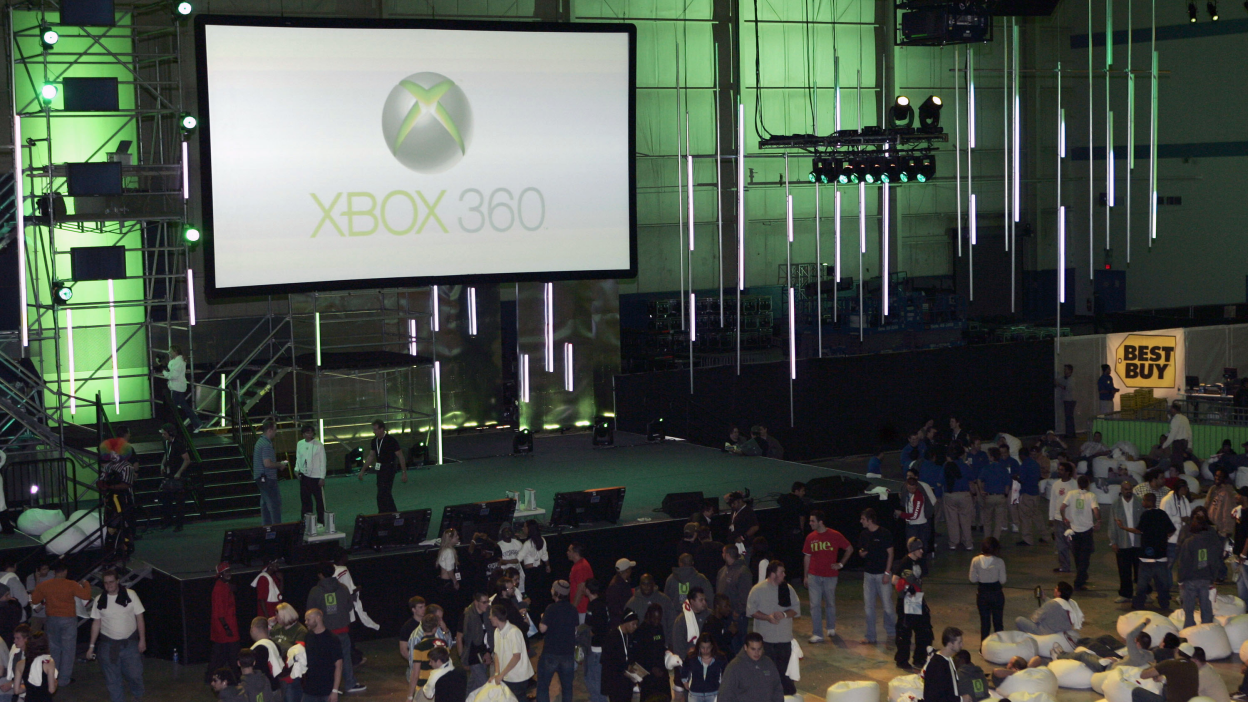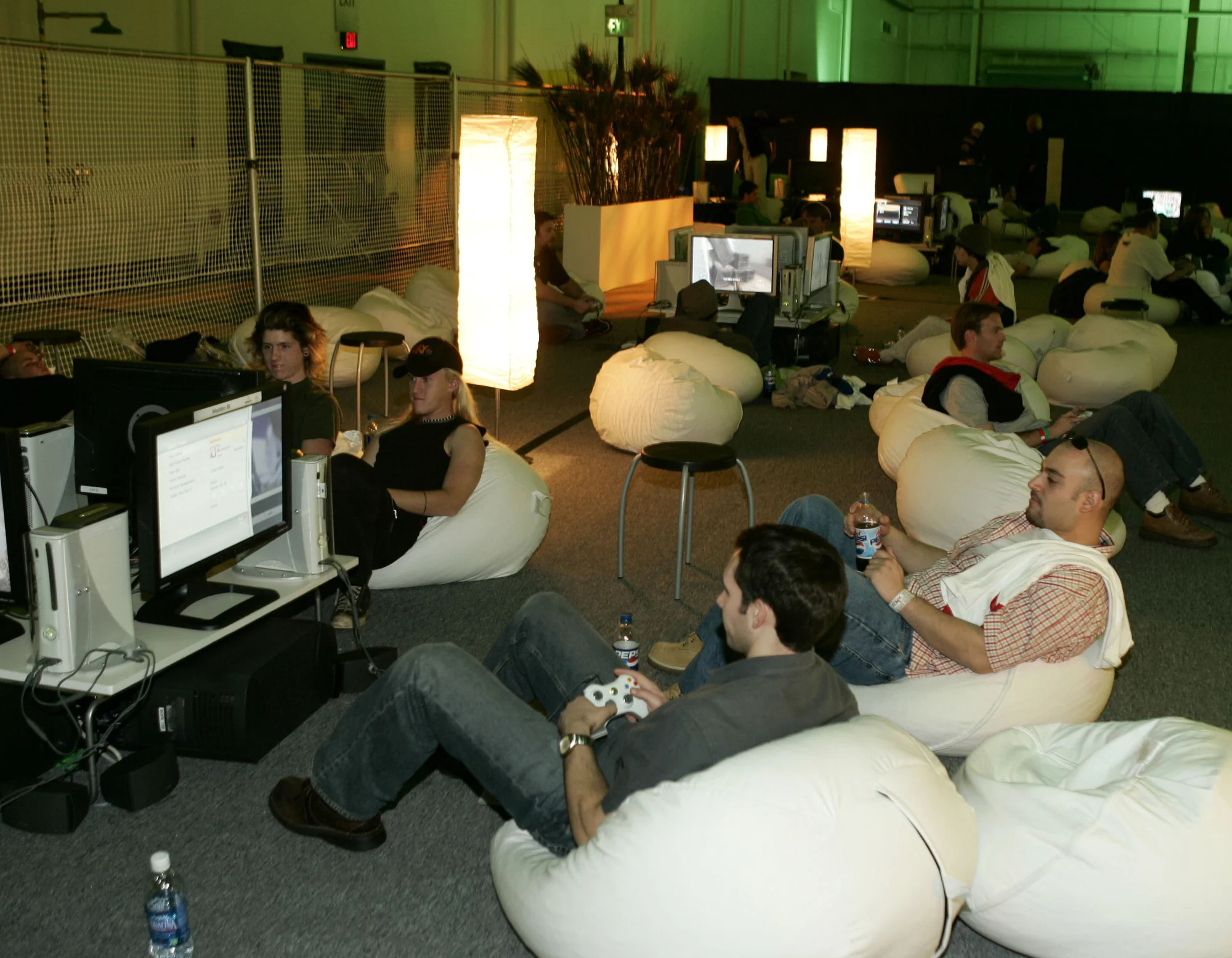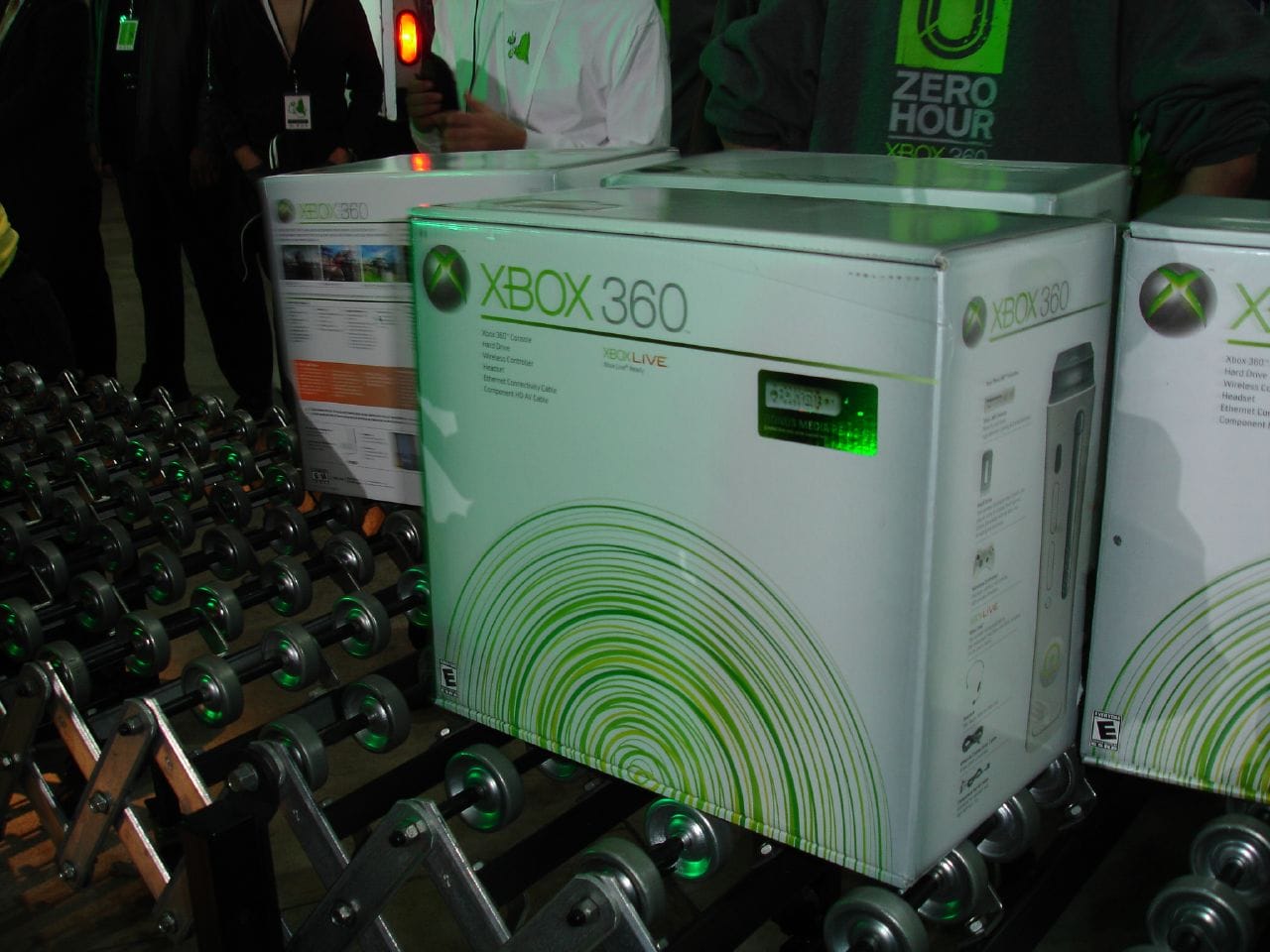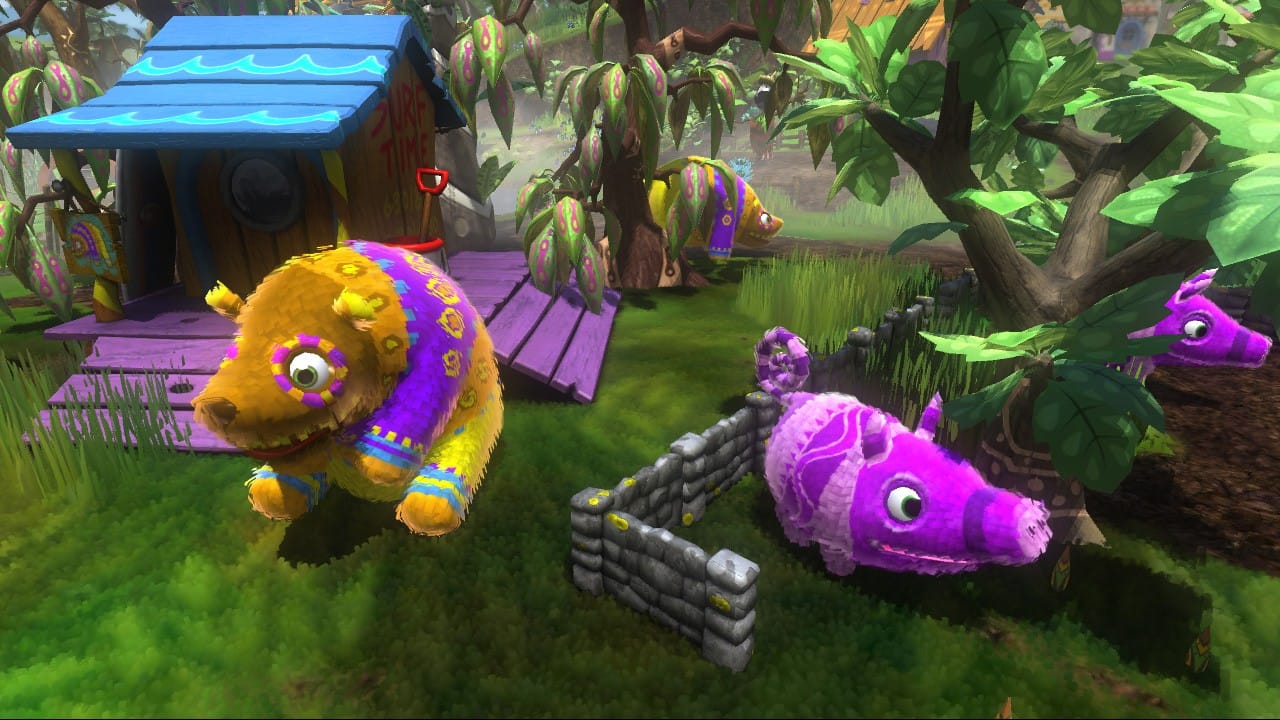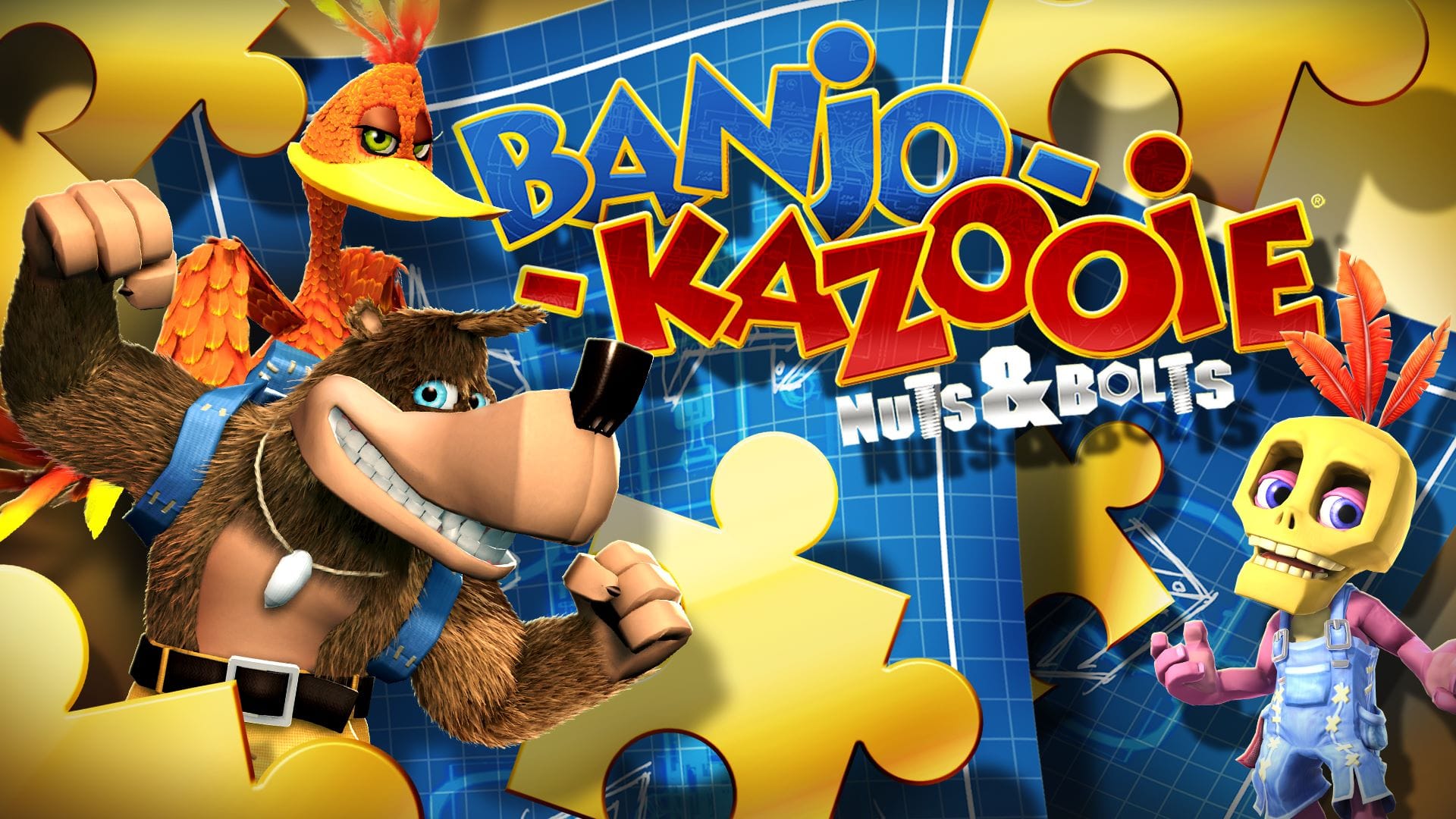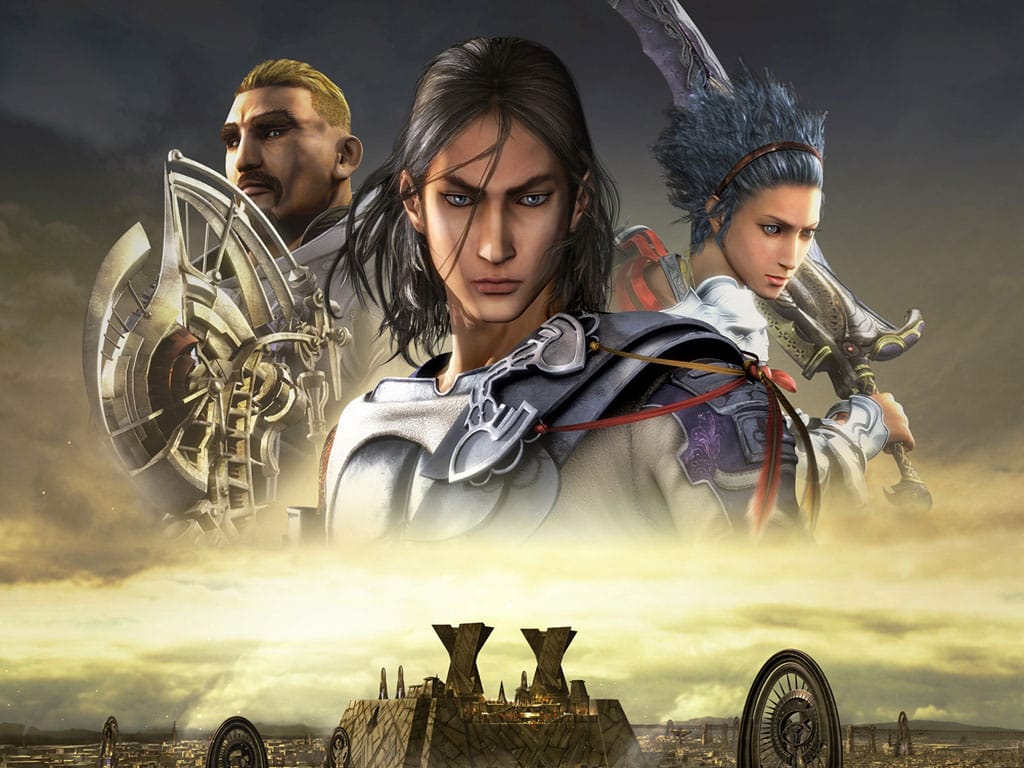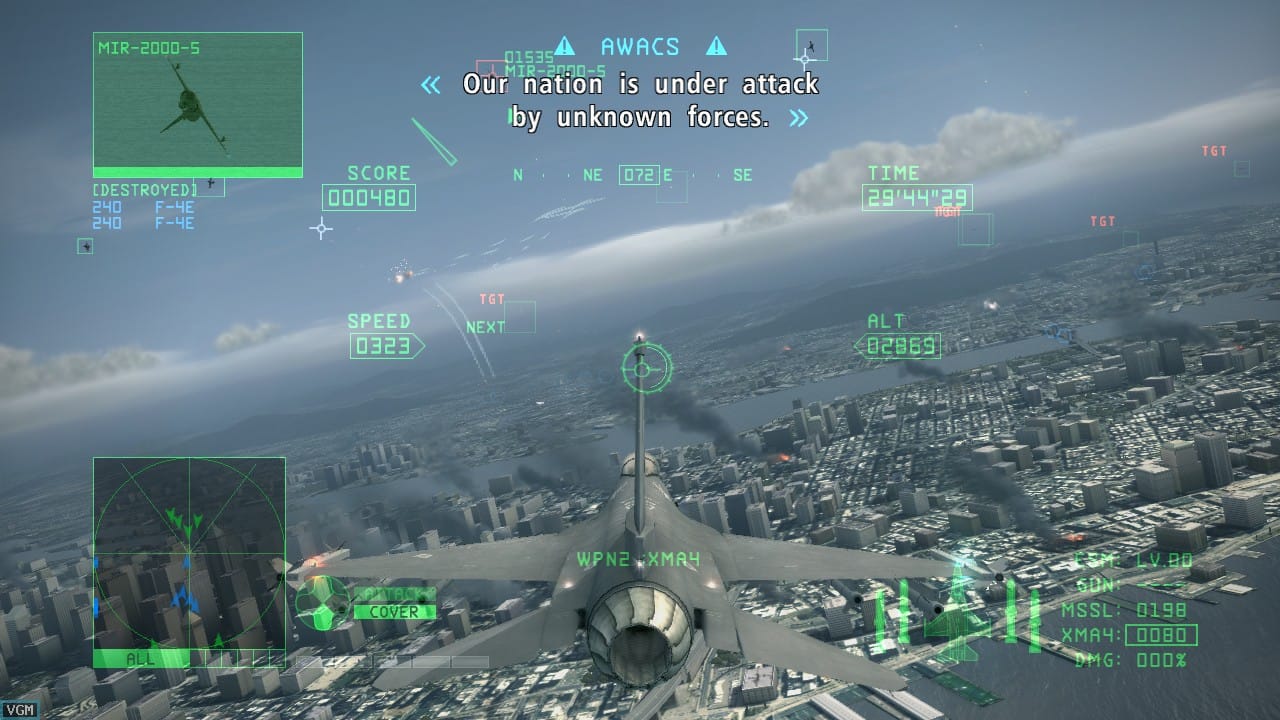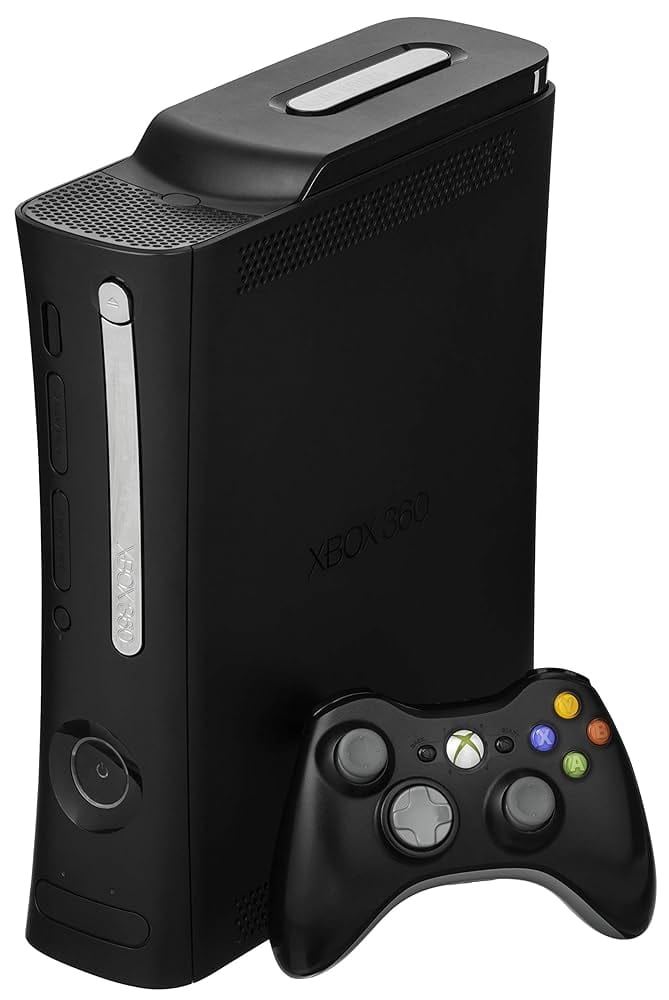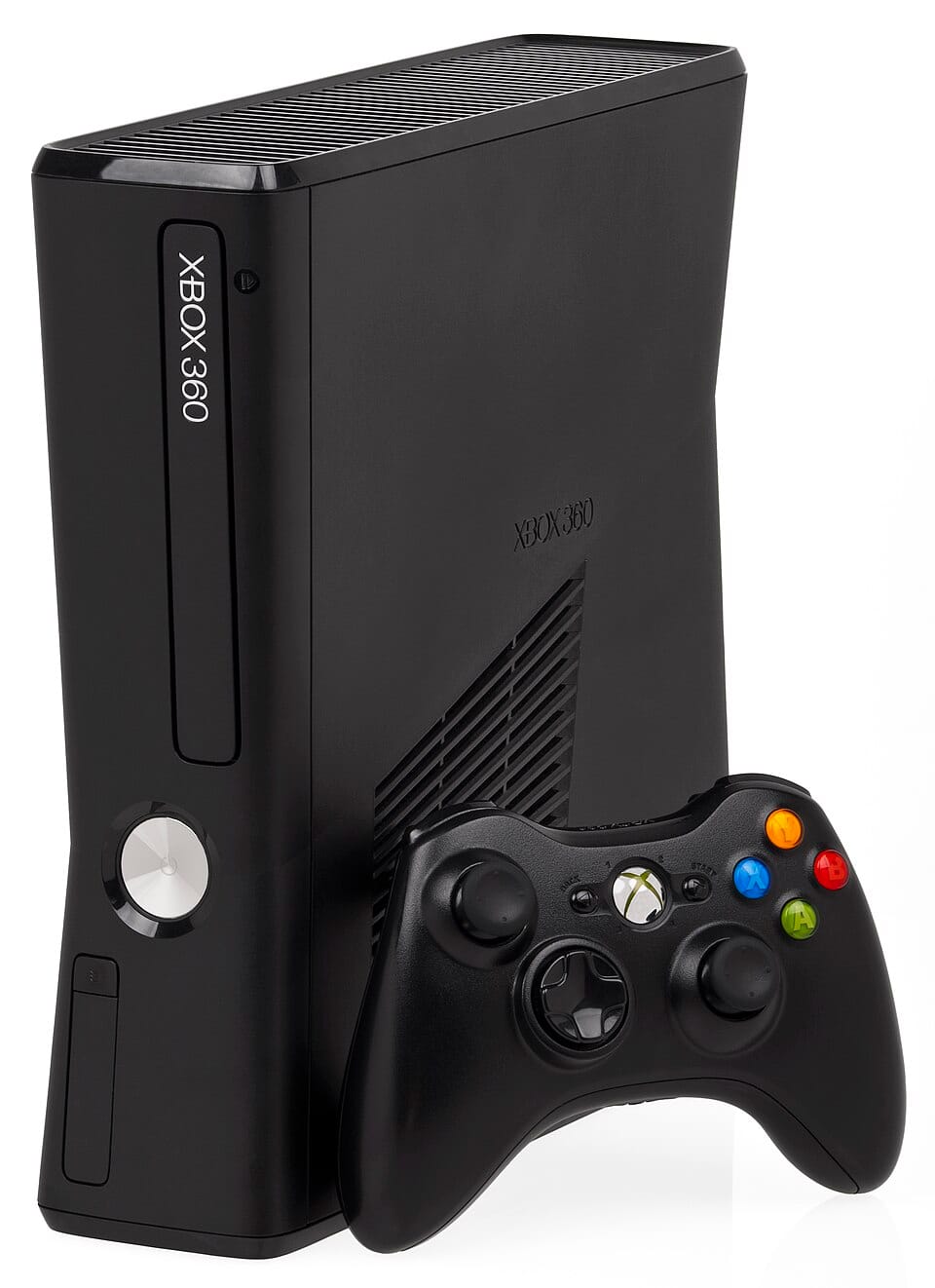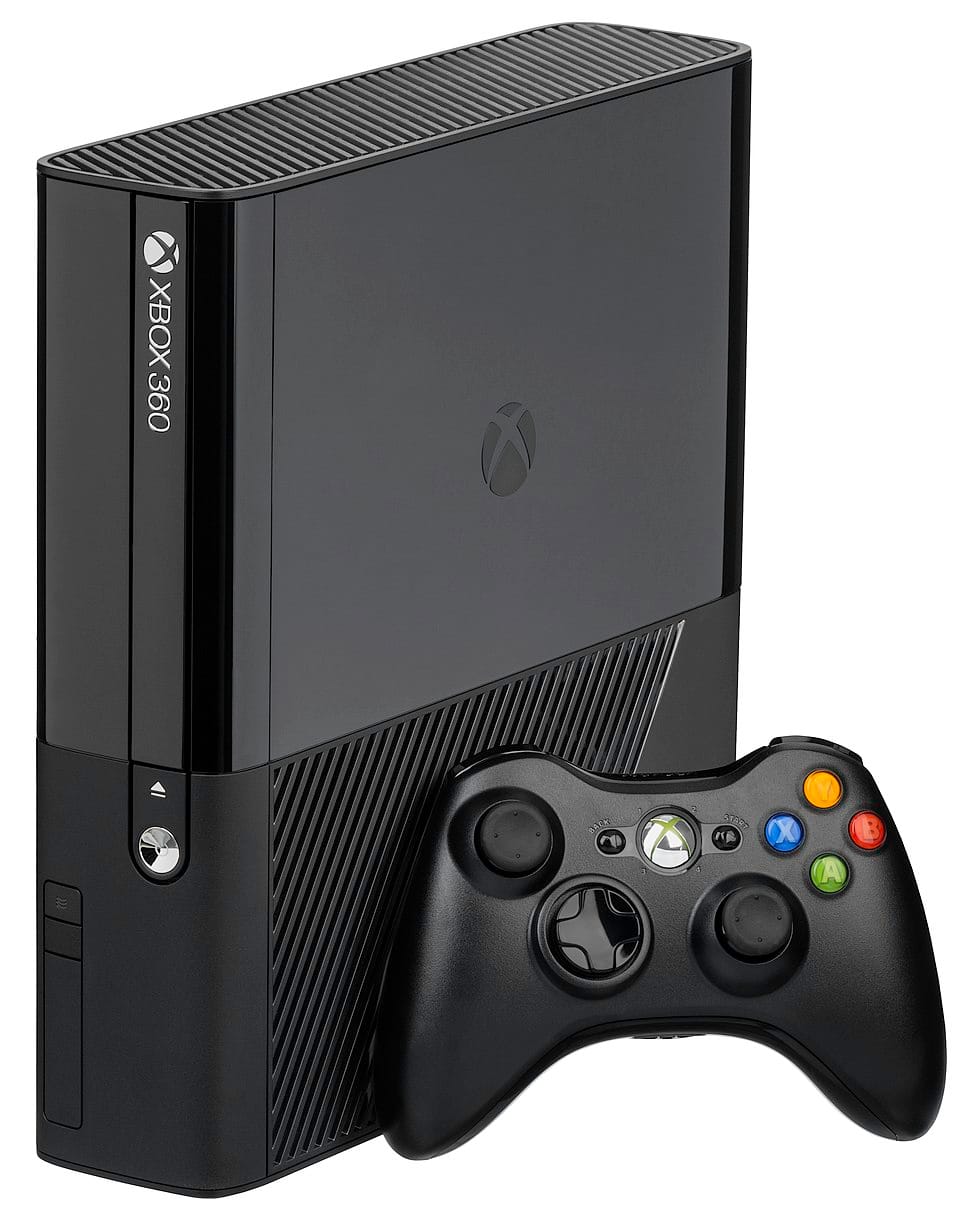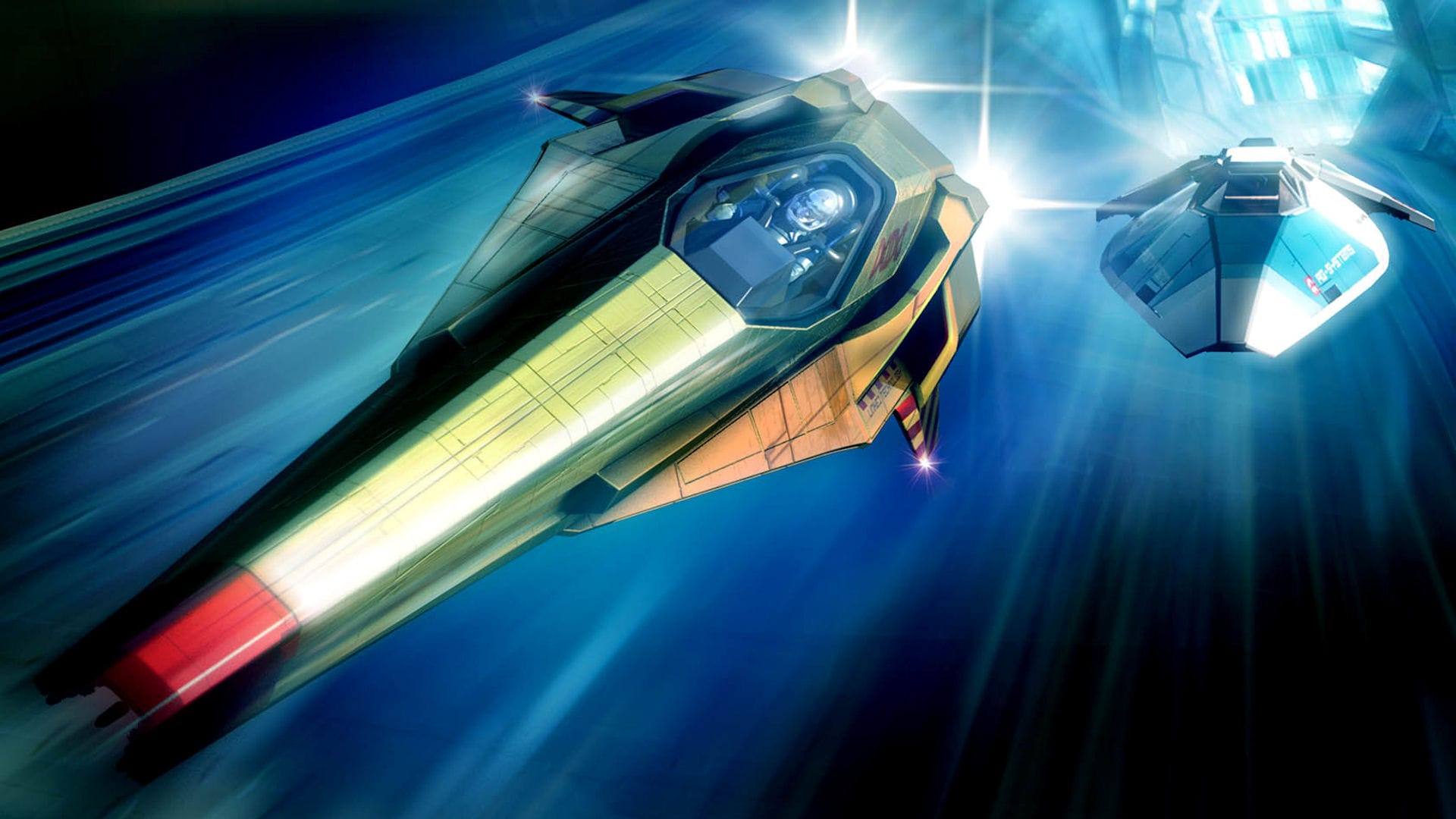When the Xbox 360 roared onto the scene in late 2005, it didn’t just mark the arrival of a new console—it signaled the beginning of modern gaming as we know it. Microsoft’s sophomore machine was born from ambition, paranoia, and no small amount of corporate gamesmanship. It was a console designed to shed the baggage of its bulky predecessor, conquer the living room with sleek high-definition graphics, and lure players into an always-connected ecosystem that felt revolutionary at the time.
Yet, for all its innovations—the wireless controller, the achievement system, the digital marketplace—it also stumbled headlong into one of the most notorious hardware meltdowns in gaming history. The Xbox 360 was both triumph and tragedy, a console that reshaped how we play while testing the patience (and wallets) of millions of gamers worldwide. To understand its legacy, let’s revisit a story of bold risks, billion-dollar mistakes, and the cultural transformation of gaming in the mid-2000s.
The Road to a Sequel

By the time the original Xbox had settled into living rooms, Microsoft was already plotting its successor. The company knew the stakes: the PlayStation 2 had cemented itself as the cultural juggernaut of the early 2000s, and Sony wasn’t about to slow down. Falling behind once was a bruising lesson—falling behind twice could be fatal. So, in early 2003, the gears started turning on what would first be known only by its codename: Xenon. This wasn’t a leisurely R&D cycle. It was an urgent sprint to make sure Microsoft wasn’t caught playing catch-up again.
Every ambitious project needs a trio of visionaries, and the Xbox 360 had its architects in Greg Gibson, J Allard, and Robbie Bach. Gibson and Allard, engineers with reputations for thinking big and executing fast, were the ones turning design sketches and processor specs into a real machine. Robbie Bach, meanwhile, played the role of strategist-in-chief. His task was less glamorous but arguably more vital: making sure this bold new console didn’t bleed money like its predecessor. They weren’t just building hardware—they were building a sustainable future for Microsoft in the gaming arena.
Convincing the top brass wasn’t a matter of asking for a blank check. According to Xbox Revisited, Bach had to stand in front of Bill Gates and Steve Ballmer and lay out why this wasn’t simply “Xbox 2.” Microsoft’s next machine had to look sharper, run smoother, and—most importantly—turn a profit. The days of treating the console as a loss-leader, relying on games and peripherals to claw back revenue, were over. Bach argued that the new Xbox had to be seen as more than just a gaming device. It needed to become a hub, an anchor for the living room, a machine that made sense for a future where high-definition screens and digital connectivity were about to redefine entertainment.
Learning From Past Mistakes
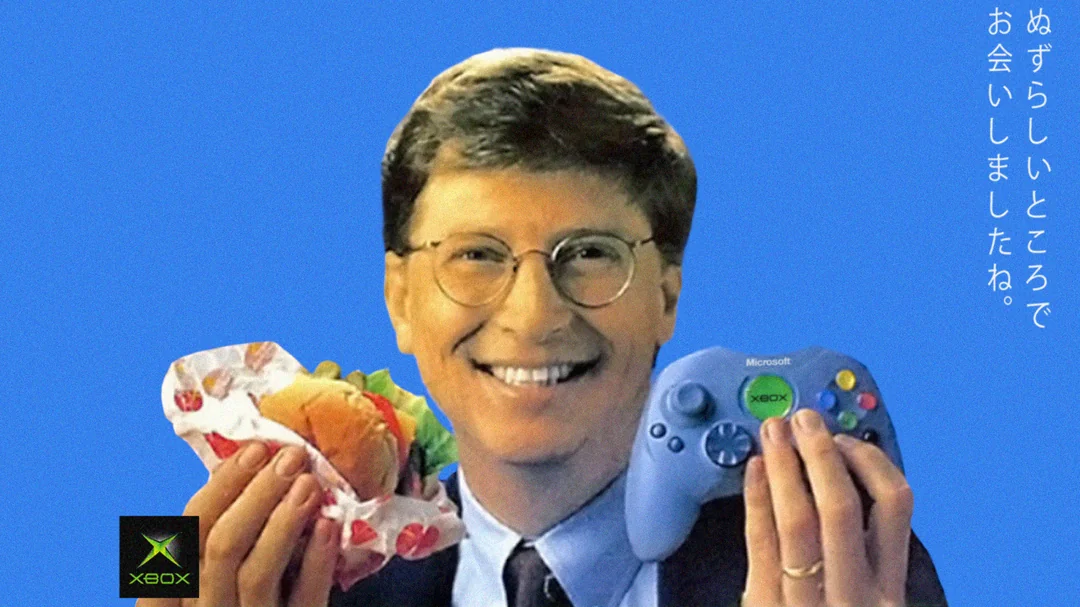
For all its horsepower, the original Xbox never cracked Japan. It was too big, too loud, and too obviously designed with Western tastes in mind. In a country where sleekness and subtlety were prized, Microsoft’s bulky black box felt like an outsider crashing the party. Japanese gamers shrugged, sales stagnated, and developers largely ignored it. If the follow-up had any hope of competing globally, it couldn’t afford to repeat those mistakes.
The 360’s design team took those lessons to heart. Out went the PC-tower aesthetic, in came curves, white plastics, and a form factor that didn’t scream “tech experiment” but rather whispered “welcome to the future.” It wasn’t just about fitting on a shelf—it was about looking at home in a living room, next to flat-screen TVs and surround sound systems. The Xbox 360 wasn’t supposed to dominate the space; it was meant to complement it.
If the console’s design was a fresh start, the controller was a full-blown redemption arc. The original “Duke” had been infamous—massive, unwieldy, and mocked endlessly. Microsoft listened. The Xbox 360’s controller was refined, ergonomic, and for the first time in console history, wireless by default. That freedom to play without a cable tether wasn’t just convenient—it was transformative, cementing a standard the entire industry would eventually follow.
Powering the Future
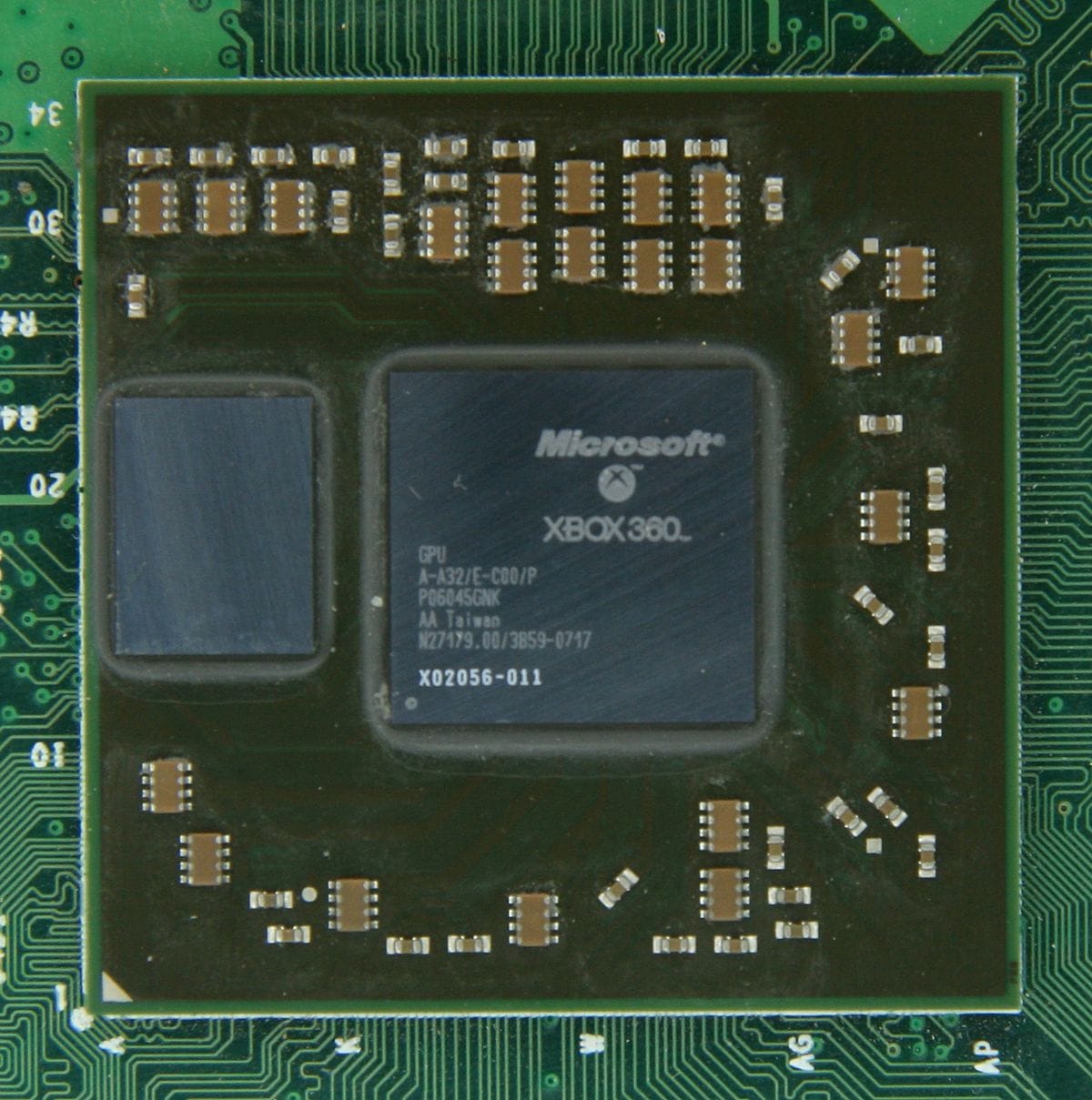
High definition was no longer a novelty—it was the next frontier. Microsoft knew the 360 couldn’t simply upscale; it had to deliver native HD visuals that would make jaws drop. ATI was tasked with building a GPU that could handle the demands of bigger screens and richer textures. The result was a chip engineered for clarity, detail, and speed, giving the Xbox 360 visuals that looked like they had leapt out of the arcade and into the living room.
The CPU war was just as critical. Microsoft tapped IBM to design a triple-core PowerPC processor, compact yet ferociously powerful. The real twist? IBM was simultaneously working with Sony on the ambitious Cell processor for the PlayStation 3. With access to both projects, Microsoft gained invaluable insight, ensuring its machine struck the right balance between raw power and developer-friendly architecture. It was a quiet coup that tilted the playing field.
The final masterstroke came from an unlikely ally: Epic Games. Midway through development, Epic’s Mark Rein told Microsoft bluntly that its planned 256MB of RAM was a death sentence, and games would need far more breathing room. Microsoft blinked, but ultimately doubled the memory to 512MB—a move that cost the company billions over the console’s lifespan. Expensive, yes. But it future-proofed the Xbox 360 and ensured its games wouldn’t just run, they’d dazzle.
Shaping the Console’s Identity
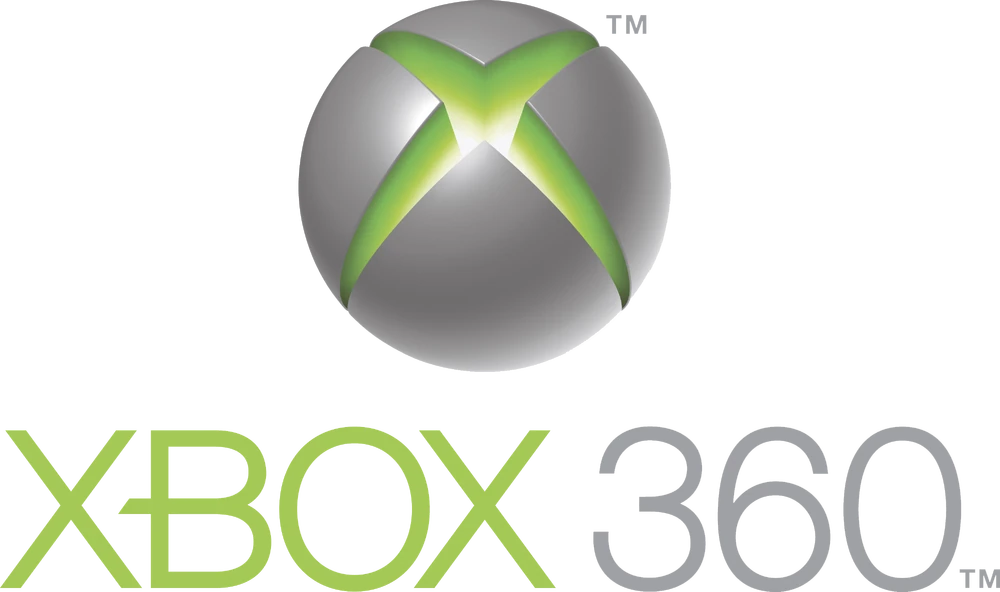
“Xbox 2” was dead on arrival. Put that next to “PlayStation 3,” and it sounded like Microsoft was already playing catch-up. Branding mattered, maybe more than specs, and the team knew they needed something bold, something that implied total immersion. They landed on Xbox 360—a name that suggested a complete circle, an all-encompassing experience. It wasn’t just about playing games; it was about being surrounded by them.
With the hardware locked, Microsoft needed a voice. The answer was “Jump In.” The slogan pitched the 360 not as a cold box of silicon, but as an invitation. Movies, music, online play, digital downloads—suddenly, this wasn’t just a console. It was an ecosystem. It was Microsoft telling the world: you’re not buying a toy, you’re joining a lifestyle.
Timing is everything. As flat-screen HDTVs finally started showing up in homes, the Xbox 360 was ready to flex. Native 720p gaming looked razor-sharp compared to the muddy standard-definition most players were used to. And while Microsoft dangled the promise of 1080p, the real victory was being first out of the gate in the high-definition era. The 360 wasn’t just keeping up with technology—it was riding the wave, shaping the very idea of what gaming could look like.
The Dashboard Revolution

Turn on an original Xbox, and you were greeted with a utilitarian menu that felt more like a settings panel than an entertainment hub. The Xbox 360 changed that in an instant. Its “Blades” dashboard was clean, vibrant, and kinetic—four sliding panels that made navigating your library, friends list, and media feel futuristic. It wasn’t just functional; it had personality. For the first time, turning on a console felt like stepping into a designed experience, not just a boot sequence.
If the Blades were the car, the Xbox Live Marketplace was the engine. For the first time on consoles, you could download game demos, movie trailers, themes, and eventually full digital games—straight to your hard drive. DLC became a new revenue stream, and while “horse armor” might have raised eyebrows, the Marketplace quietly reshaped how games were sold, marketed, and consumed. Microsoft had cracked open the door to a digital-first future.
Then came the hook no one saw coming: Achievements. Suddenly, every game had a list of challenges tied to a numerical score—your Gamerscore—that followed you across every title you played. It was brilliant psychology: digital bragging rights, visible to your friends, baked into the ecosystem. Hunting down Achievements became a game in itself, sparking midnight debates, obsessive completion runs, and a new type of competitive culture that stretched far beyond the multiplayer arena.
Launching Into the Spotlight (2005)
Microsoft wasn’t about to repeat history. With the PlayStation 2 still casting a long shadow, the company made the bold call to launch the Xbox 360 an entire year before Sony’s PS3. November 22, 2005, was the opening salvo. For North American gamers, it felt like Christmas had arrived early—and with it, the start of the HD console era.
The launch library was a mixed bag but strategically varied. There was Kameo: Elements of Power for fantasy fans, Project Gotham Racing 3 for gearheads, Ridge Racer 6 to court arcade loyalists, and even Peter Jackson’s King Kong to capitalize on a blockbuster tie-in. None were revolutionary, but together they painted a clear picture: the 360 had horsepower to spare, and HD visuals were the new baseline.
But with hype came headaches. Demand wildly outstripped supply, leading to launch-day chaos. Retailers sold out within hours, and the secondary market went nuclear. Roughly 40,000 Xbox 360s ended up on eBay in the weeks after launch, with desperate fans shelling out double—or even triple—retail price just to get their hands on one. It was a PR nightmare wrapped in a lesson about manufacturing scale.
Microsoft also complicated things with its two-SKU strategy. The $299 Core system came without a hard drive, a move aimed at lowering the entry price but leaving early adopters hamstrung. The $399 Pro system included a 20GB drive and chrome trim, but neither model launched with HDMI support—a glaring omission for a console built to usher in the HD era. It sparked debates on value that would linger long after the first wave of buyers had plugged in.
Backwards Compatibility, Sort Of
When Microsoft unveiled the Xbox 360, one of the first questions on every fan’s mind was simple: “Will it play my old games?” The original Xbox had only been around for four years, and players had built up sizable libraries. Sony had set the bar with the PS2’s seamless support for PlayStation discs, so expectations were sky-high.
The answer Microsoft gave was a little complicated. Yes, the 360 could play Xbox games — but not in the straightforward, plug-it-in-and-go way people were used to. Instead of true hardware-level compatibility, the 360 used software emulation. Every game needed a custom patch to run properly, and that meant only a curated list of titles were supported. At launch, a little over 200 games made the cut. Others… not so lucky. If your favorite obscure fighter or cult RPG wasn’t on the list, you were out of luck.
Performance was also a mixed bag. Some games ran beautifully, sometimes even smoothing out frame rates. Others glitched, stuttered, or crashed entirely. It was an ambitious solution, but it wasn’t the “keep your whole library” promise fans had secretly hoped for.
Microsoft, however, had a clever trick up its sleeve. Thanks to Xbox Live, they could quietly update the compatibility list over time, expanding support and improving performance. If you were connected online, patches would download automatically. But here’s the fun part: if you weren’t online? You could actually order or pick up demo discs that included the latest updates. It was a bizarrely retro way of delivering next-gen fixes — mailing discs in the age of broadband — but it showed how far Microsoft was willing to go to at least keep the dream of backwards compatibility alive.
It wasn’t perfect, but for many players, it was enough to make the transition feel less like a clean break and more like a continuation.
Games That Defined the 360
The Xbox 360 wasn’t just a shooter machine — it was a platform where Microsoft flexed its ambition, from driving simulators that rivaled the real thing to quirky experiments involving paper-mâché piñatas. These are the titles that gave the 360 its character.
Instead of another shooter, Microsoft bankrolled something utterly bizarre: Viva Piñata. Casual players found themselves sucked into the charm, building habitats, coaxing little piñatas to dance and mate, and getting strangely competitive over the most colorful garden layouts. It was bright, colorful, and totally unlike anything else in the Xbox lineup — proof that the 360 could be whimsical, not just hardcore.
Banjo-Kazooie: Nuts & Bolts wasn’t the 3D platformer fans expected. Instead, it was a wild vehicle-building sandbox where you bolted together cars, planes, and contraptions to solve challenges. Risky? Absolutely. But it worked. It has since earned cult respect for how daring and creative it really was.
With Mistwalker and Final Fantasy legend Hironobu Sakaguchi at the helm, Lost Odyssey was Microsoft’s answer to the PS3’s Japanese dominance. Sprawling turn-based battles, a sweeping story, and the heartbreaking “A Thousand Years of Dreams” vignettes made it the closest thing to a classic Final Fantasy the 360 ever had.
By the time Forza 4 rolled around, Turn 10 had transformed Microsoft’s racer into a serious rival to Sony’s Gran Turismo. Gorgeous car models, slick handling, and features like Kinect-powered head-tracking showed off the console’s horsepower. For many, it was the most complete sim racer of the generation.
And then there was Ace Combat 6, a jet-fueled thrill ride. High-octane aerial dogfights, stunning vistas, and arcade-level exhilaration reminded everyone that the 360 could handle both spectacle and precision. Whether you were dodging missiles or diving through clouds, it cemented the console as a playground for blockbuster experiences and niche passions alike.
Together, these games painted a broader picture of the Xbox 360’s identity. It wasn’t just about gruff space marines and headshots. It was about polish, experimentation, and Microsoft’s willingness to take risks — even if those risks didn’t always land.
The Red Ring Era
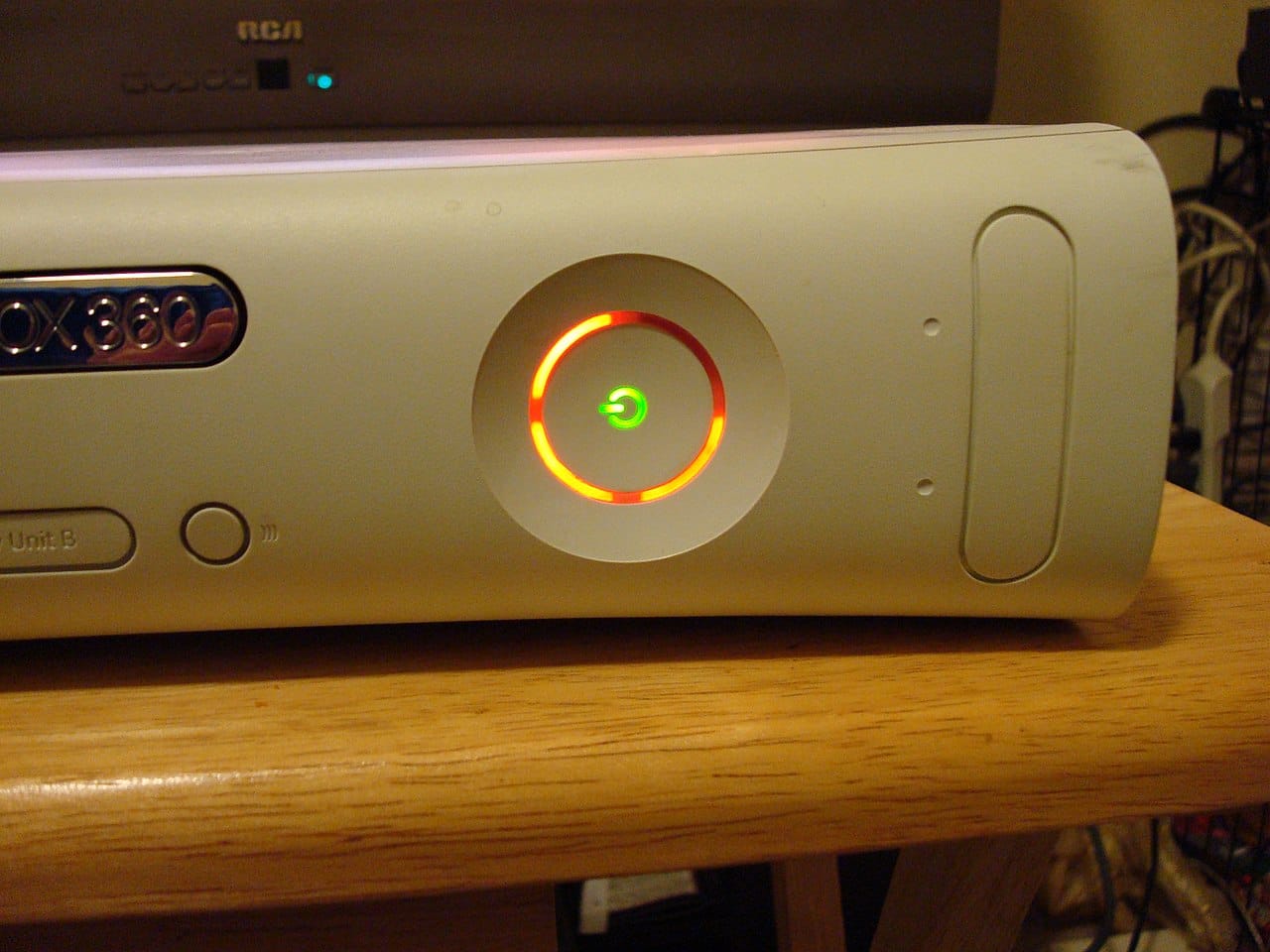
If the Xbox 360’s backwards compatibility was a mild frustration, the Red Ring of Death was an outright nightmare. For millions of gamers, the glowing green circle on the front of their console was supposed to mean one thing: power on, ready to play. But when that circle lit up with three ominous red quadrants, it became a symbol of frustration, anger, and shattered trust.
The problem was as catastrophic as it was widespread. Early 360s ran hot — very hot. The console’s sleek new shell was smaller and more stylish than the original Xbox, but it came with a design flaw: poor cooling. Overheating warped the motherboard, loosened solder joints, and sent consoles into a death spiral.
Gamers dreaded the moment their console froze mid-match or booted up only to reveal the dreaded red lights. Stories of players going through multiple replacements weren’t uncommon, and forums lit up with frustration. The Xbox 360 was supposed to be the future of gaming, but in living rooms across the world, it was suddenly a very expensive paperweight.
From the start, the warning signs were there. Microsoft allegedly refused to invest in proper testing infrastructure, cutting corners on the very systems that would’ve caught the defects. They reportedly turned down a $25 million consulting deal — to save just $2 million — and ordered only one-third of the debug machines engineers said were essential for vetting hardware. It was a decision that left the company’s testing process woefully underpowered, a case of corporate thrift at the expense of customer trust.
Inside the labs, engineers were panicking. They saw the problems firsthand: overheating GPUs, cracking heatsinks, warped motherboards, underperforming memory chips, and disk drives that sounded like they were chewing through games. By August 2005, yield rates were just 68%, which essentially meant two out of every three consoles coming off the production line weren’t even fit to ship. Some engineers begged leadership to shut down production and figure out what was going wrong.
But the message from the top was clear: full steam ahead. Executives Robbie Bach and Peter Moore waved off concerns, declaring the Xbox 360 “ready” for launch. The holidays were coming, and Microsoft wasn’t about to miss its shot at getting a head start on Sony.
The result? A slow-motion PR disaster. Within months, reports of dead consoles flooded in, and the “Red Ring of Death” became a household phrase. It’s estimated that 30 to 35% of early units failed at some point — an unheard-of figure for a mainstream consumer product. Players weren’t just frustrated; they felt betrayed.
To Microsoft’s credit, they didn’t run from the problem forever. After months of growing backlash, the company announced a sweeping fix: an extended three-year warranty specifically for Red Ring failures. On top of that, they invested more than $1 billion into repair and replacement programs — a staggering cost, but one that ultimately saved the console’s reputation. Technicians in warehouses across the globe churned through broken 360s, while revised models slowly began to roll out with sturdier boards and better cooling.
It was a painful chapter, but Microsoft turned it into a turning point. The Xbox 360 survived the Red Ring era not because the hardware was flawless, but because the company swallowed the cost, owned the mistake, and rebuilt trust with players.
Fighting the Format War
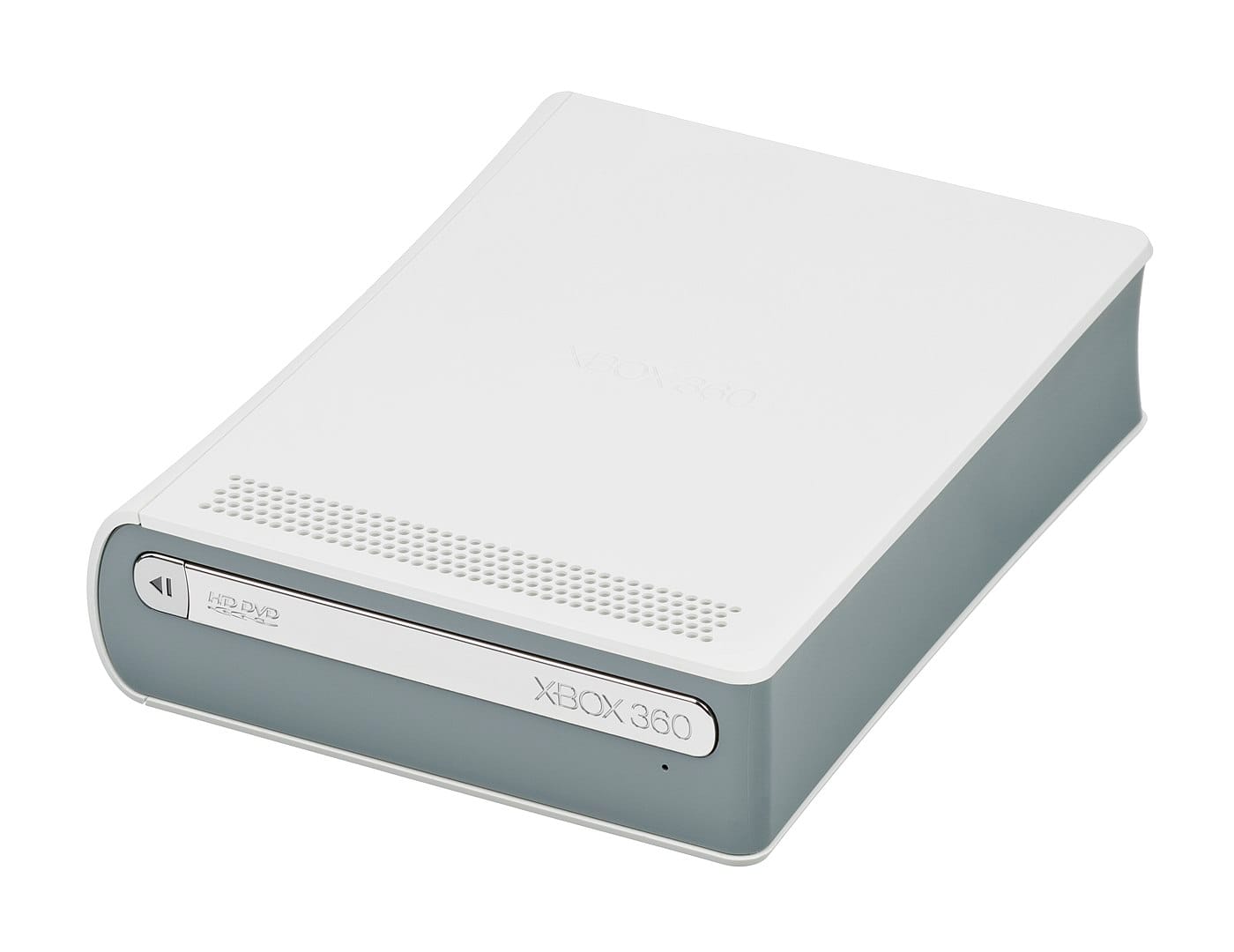
As if the console war with Sony wasn’t enough, the Xbox 360 also got dragged into another high-stakes battle: the format war. On one side, Sony was pushing Blu-ray, the shiny new high-capacity disc format baked directly into every PlayStation 3. On the other, Microsoft threw its weight behind HD-DVD, a format championed by Toshiba and a handful of Hollywood studios.
The problem? Unlike Sony, Microsoft didn’t include HD-DVD support inside the console. Instead, they offered a $199 external add-on drive — a chunky little box that sat awkwardly next to the 360 like a clingy younger sibling. It worked, technically, but it was hardly elegant. Gamers who wanted to watch high-def movies now had an extra cable, another power brick, and a sense that they were beta testing the future of home video.
For a while, the war was neck and neck. Some studios backed Blu-ray, others backed HD-DVD, and early adopters were stuck guessing which way Hollywood’s wind would blow. But the tipping point came in January 2008, when Warner Bros. — the biggest studio still supporting HD-DVD — jumped ship to Blu-ray. That was the death knell. Within weeks, retailers like Walmart and Best Buy cleared HD-DVD from their shelves. Microsoft quietly discontinued the add-on, and Blu-ray emerged as the undisputed winner.
In the end, the 360 didn’t suffer much from losing the format war — streaming video was already waiting in the wings, and physical media would matter less and less as the generation wore on. But for a brief moment, the Xbox 360 wasn’t just fighting Sony for living rooms — it was caught in the crossfire of Hollywood’s last great disc battle.
Xbox Live Levels Up
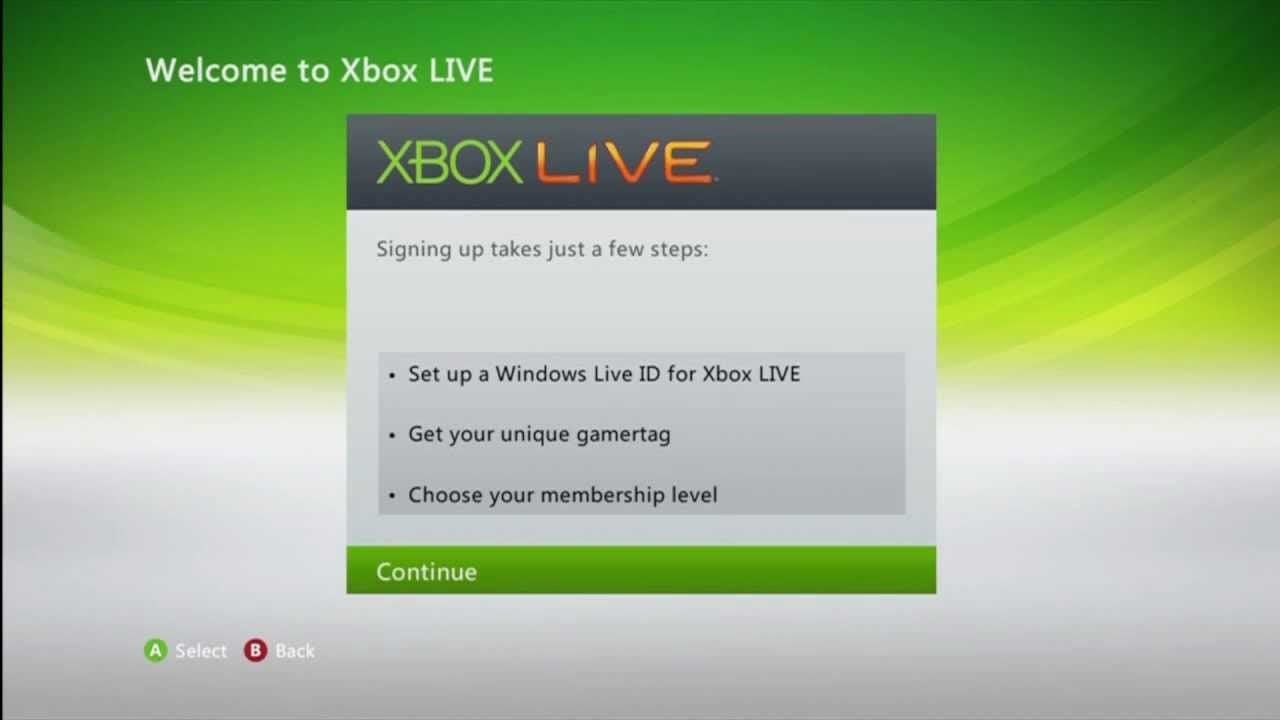
If the original Xbox laid the foundation for online console gaming, the 360 turned it into a fully realized ecosystem. Microsoft didn’t just build an online service — it built a subscription model, a social network, and a digital storefront years before those concepts became industry standard.
The first step was tiers. Every 360 owner got Xbox Live Silver for free, which allowed messaging, friend requests, and access to downloads. But if you wanted the real deal — online multiplayer — you had to pony up for Xbox Live Gold. At $50 a year, it sparked grumbling, but millions paid up. Sony may have offered free online play with the PS3, but Microsoft had created a gated garden that players decided was worth the cover charge.
The Xbox Live Marketplace became the console’s beating heart. Suddenly, the system wasn’t just about discs — it was about downloadable demos, DLC, trailers, themes, and eventually entire games. The 360 was one of the first consoles where the disc you bought wasn’t the final word; developers could patch, expand, and monetize long after release. Love it or hate it, this was gaming’s new reality.
And then came Party Chat in 2008, which flipped the social dynamic on its head. For the first time, up to eight friends could talk in real time across different games. You could be grinding in Lost Odyssey while a buddy raced in Project Gotham 3, and still banter like you were all in the same room. It turned Xbox Live into a virtual hangout space — less about the games themselves, more about the people you played them with.
What Microsoft built on the 360 wasn’t just online multiplayer — it was an entire digital lifestyle, one that made Xbox Live Gold feel indispensable. In hindsight, this was the console’s true killer app.
The Dashboard Evolutions
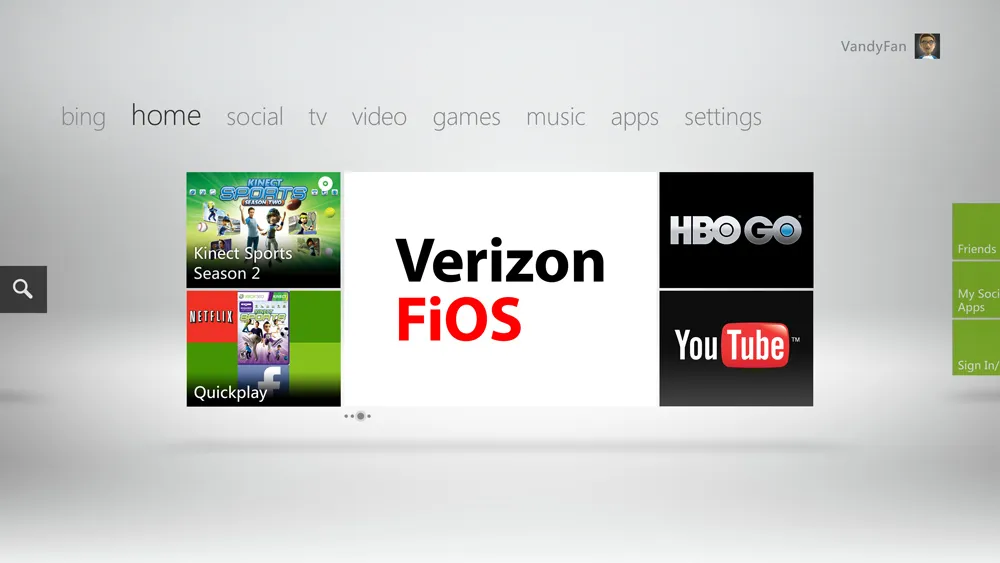
The Xbox 360 didn’t just grow a bigger game library over the years — it reinvented how players navigated the console itself. Few systems in history went through as many dramatic makeovers, and each new dashboard wasn’t just a facelift, it was a statement about where Microsoft wanted the 360 to live in the broader tech world.
In 2008, Microsoft rolled out the New Xbox Experience (NXE), and overnight the console felt brand new. The blades were gone, replaced with a sleeker interface that introduced customizable avatars, more social features, and most importantly, Netflix streaming. For a lot of players, this was the first time their game console felt like something more — a gateway to movies, music, and shared experiences.
Finally, in 2011, the 360 dashboard went through one last radical transformation with the Metro update. Borrowing from Microsoft’s Windows Phone and later Windows 8 design, the console adopted a tile-based interface, added cloud saves, and tied itself tightly to the wider Microsoft ecosystem. The Xbox was no longer just a console — it was officially part of the company’s vision of a unified digital life.
By the end of its run, the Xbox 360’s dashboard looked almost nothing like it did in 2005. Each overhaul told the story of a console constantly chasing relevance, reshaping itself to keep pace not just with gaming, but with the entire digital living room.
Xbox Live Arcade – The Indie Gateway
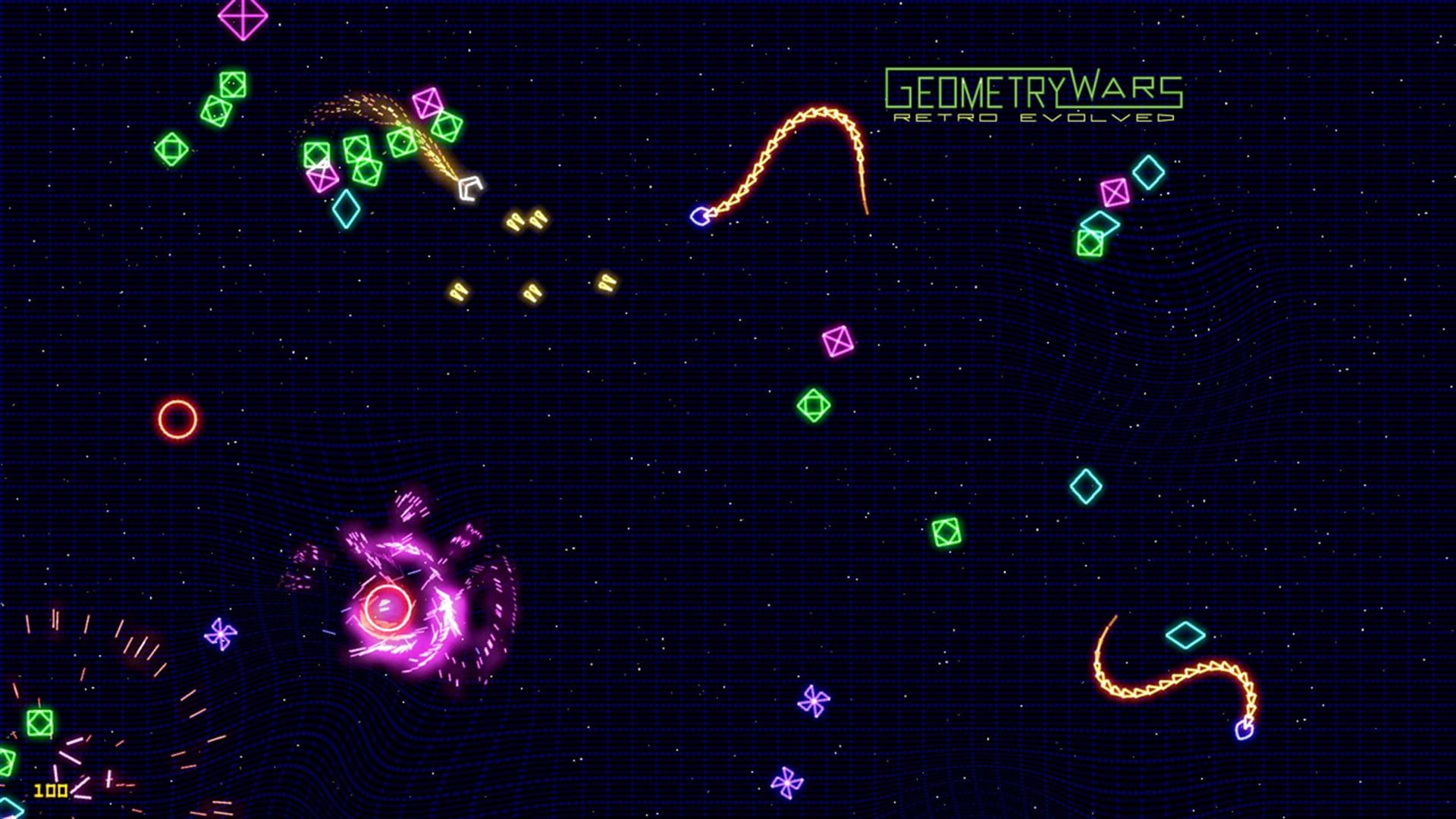
If Xbox Live Gold made the 360 feel essential, Xbox Live Arcade made it feel revolutionary. What started as a small experiment on the original Xbox blossomed into something far bigger on the 360 — a digital storefront for bite-sized games that didn’t need discs, publishers, or retail shelf space.
At first, it was a curiosity. Microsoft launched with quirky titles like Geometry Wars: Retro Evolved, which went from a hidden mini-game inside Project Gotham Racing 2 to a full-blown cult hit. But soon the platform became a proving ground for creativity. Suddenly, games like Braid, Castle Crashers, and Limbo weren’t just indie darlings — they were system-sellers in their own right, showing that smaller, cheaper downloads could spark the same kind of excitement as the big-budget blockbusters.
The brilliance of Xbox Live Arcade wasn’t just the games themselves, but the democratization of access. For a few bucks, anyone could try out something new and weird without risking $60 on an unknown quantity. It was snackable gaming in an era when everything else was a sit-down feast.
And let’s be honest: this was also Microsoft at its most visionary. While Sony was still figuring out its digital strategy and Nintendo was doubling down on retail, the 360 was already normalizing digital purchases, leaderboards, and bite-sized experiments. Many of today’s indie megastars got their first big break because Microsoft took a chance on letting small teams shine.
In hindsight, Xbox Live Arcade wasn’t just a side feature — it was the birthplace of the modern indie scene on consoles.
From Games to TV – The Netflix Leap
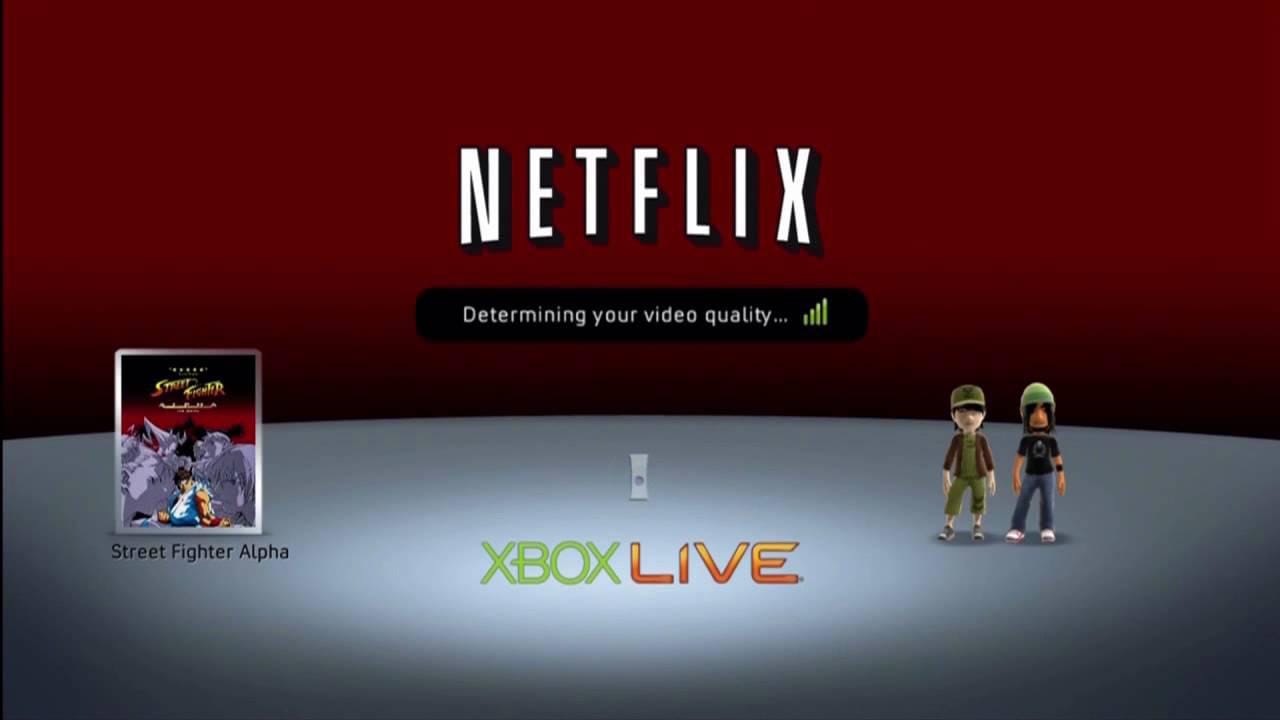
If Xbox Live Arcade showed that the 360 could reshape how we play, Netflix proved it could reshape how we watch. In 2008, Microsoft made a bold move: the Xbox 360 became the first console to offer Netflix streaming, turning a game machine into a living room entertainment hub.
It was a game-changer. No discs, no late fees, no waiting for that red envelope in the mail. Suddenly, with a Gold subscription and a decent internet connection, the 360 transformed into a streaming device — years before Roku, Fire Stick, or Smart TVs became household staples. For many people, their first taste of binge-watching didn’t come from a laptop or a phone; it came from an Xbox.
And Netflix was just the beginning. The console quickly picked up apps for Hulu, ESPN, HBO Go, YouTube, and a parade of music and video services. By the early 2010s, the 360 was no longer just a “game console” — it was being sold as the centerpiece of home entertainment.
Microsoft even leaned into this identity shift. Advertising wasn’t just about new games anymore — it was about “all-in-one” living room power. It wasn’t unusual to see as much emphasis on movie streaming and music apps as on the latest shooter or racer.
Looking back, this was the moment the 360 stopped competing only with Sony and Nintendo and started competing with cable boxes. The lines were blurring, and the Xbox wasn’t just keeping up — it was setting the pace.
Kinect Mania
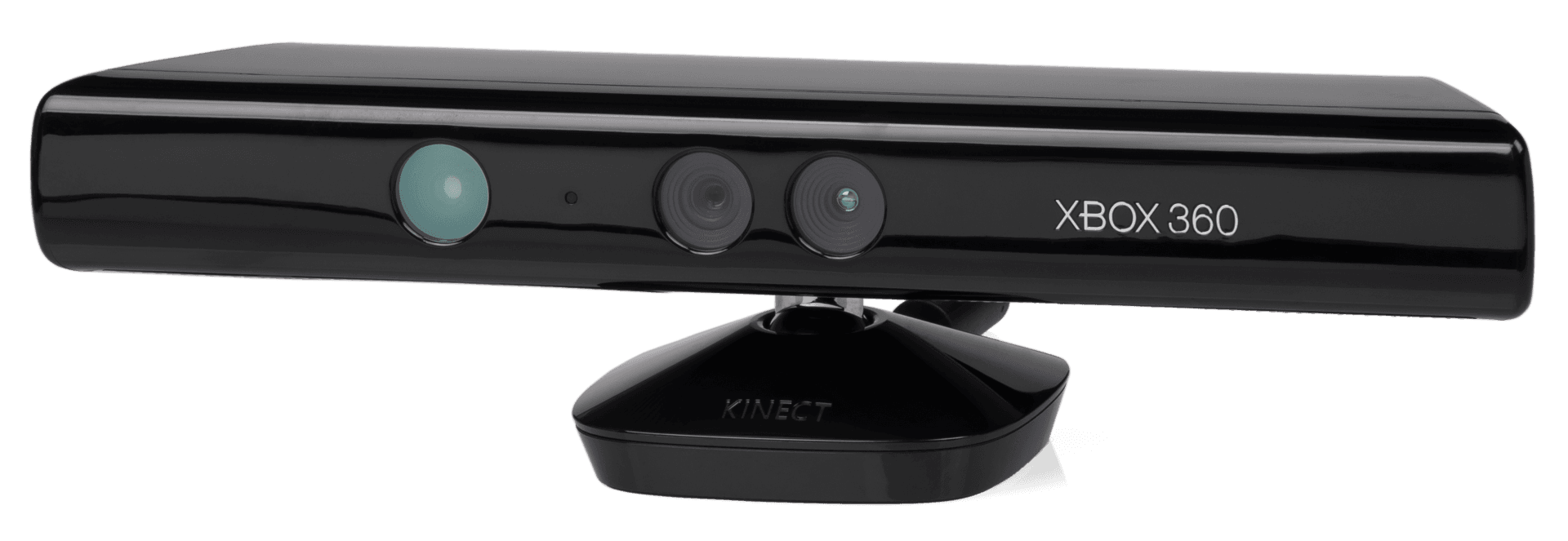
By 2010, Microsoft was hungry for its own Wii moment. Nintendo had struck gold with motion controls, pulling in families and grandparents who had never touched a game console before. Microsoft’s answer? Kinect — a glossy black bar that sat beneath the TV and promised the future. No controllers, no buttons, just you. Wave your arms, kick your legs, shout commands, and the Xbox 360 would obey.
At first, it worked. Kinect Adventures! became the surprise pack-in hit, with families flailing around their living rooms dodging balls and jumping through virtual hoops. Dance Central brought rhythm gaming to a new level, making players sweat their way through choreographed routines. Families bought in. Casual players bought in. Even late-night talk shows turned Kinect into a pop-culture talking point. The sales reflected the hype: over 24 million units sold, making it the fastest-selling consumer device at the time. For a while, the Xbox 360 wasn’t just a gaming console, it was the living room gadget.
But beneath the flashy marketing and early excitement, cracks began to show. The $150 price tag made it a harder sell compared to Nintendo’s pack-in Wii remotes. Core gamers — the same crowd that had flocked to Halo and Forza — found little reason to use it beyond the occasional party game. The tech itself, while impressive, never quite delivered the futuristic dream Microsoft had promised. By 2012, Kinect was less a revolution and more a reminder of how quickly gaming trends could rise and fall.
Still, Kinect left a mark. For a brief, shining moment, the Xbox 360 wasn’t just competing with the Wii — it was the Wii, or at least Microsoft’s take on it. And even if the fad faded, Kinect showed that the 360 could adapt, experiment, and chase audiences far beyond the traditional gamer.
Hardware Revisions and Redesigns
The Xbox 360’s story wasn’t just told in games and services — it was also written in plastic, silicon, and steel. Few consoles went through as many facelifts as Microsoft’s second machine, each revision a response to shifting markets, frustrated fans, or the company’s own evolving vision of what the 360 could be.
First came the Elite in 2007, a jet-black beast with a cavernous 120GB hard drive. It wasn’t just a console, it was a statement — Microsoft’s way of saying, “this is the premium experience.” For hardcore gamers who were downloading DLC, demos, and movies off the Marketplace, that extra space felt like a godsend. The Elite was sleek, serious, and finally looked like something you wouldn’t mind displaying in your entertainment center.
Then, in 2010, came the real game-changer: the Xbox 360 Slim. Quieter. Cooler. More reliable. After years of RRoD nightmares, the Slim was redemption in hardware form. Built on a smaller, more efficient chip design, it trimmed away the bulk, ditched the external power brick’s obnoxious heat output, and even packed in built-in Wi-Fi. For many players, this was the moment the Xbox 360 finally became the console it was always meant to be.
But Microsoft wasn’t done. In 2013, with the Xbox One looming, the company released the Xbox 360 E — a swan song dressed to match its younger sibling. The design was simplified, boxier, more in line with Microsoft’s sleek new branding. Functionally, it didn’t bring much new to the table, but that wasn’t the point. The 360 E was about closing the book neatly, aligning past and future with one final redesign.
Across its lifespan, the 360’s shifting shells told their own story: one of ambition, adaptation, and recovery. Each iteration was more than a cosmetic upgrade — it was Microsoft learning, responding, and ultimately refining a console that, despite its rocky hardware start, became one of the most beloved machines of its generation.
The Legacy of Xbox 360
The Xbox 360 will forever be remembered as a console of contradictions — a machine defined by soaring highs and painful lows. On one hand, it was a pioneer, pushing the boundaries of online play, digital distribution, and community features. On the other hand, it stumbled out of the gate with hardware failures so widespread they nearly derailed Microsoft’s gaming ambitions entirely. Few consoles have ever embodied both innovation and frustration so completely.
Yet for all its cracks in the plastic, the 360 changed the DNA of modern gaming. Xbox Live, once a simple online matchmaking service, evolved into a fully realized digital ecosystem under the 360. Marketplace, party chat, DLC, avatars, streaming — it was all there, laying the blueprint for how consoles would connect players in the years to come. Every online service since, from PlayStation Network to Nintendo Switch Online, owes a debt to what Microsoft built in that era.
And then there were the little things that didn’t feel so little at the time. Achievements, a system that seemed almost gimmicky at first, became an obsession for players — the dopamine hit of a “ping” reshaped how people approached games. Downloadable content, once a niche PC concept, became the industry standard. Cloud saves, digital storefronts, even the idea of a constantly evolving dashboard — all of it found its footing on the 360.
When the dust settled, the Xbox 360 wasn’t just another console. It was a transitional machine, the bridge between the offline, cartridge-and-disc past and the connected, digital-first present. For millions of players, it wasn’t just about games — it was about community, identity, and the thrill of being part of a gaming world that suddenly felt bigger than ever.
The legacy of the Xbox 360 isn’t perfect, but it’s undeniable. It’s the console that broke hearts with red rings — and the one that changed gaming forever.
Conclusion
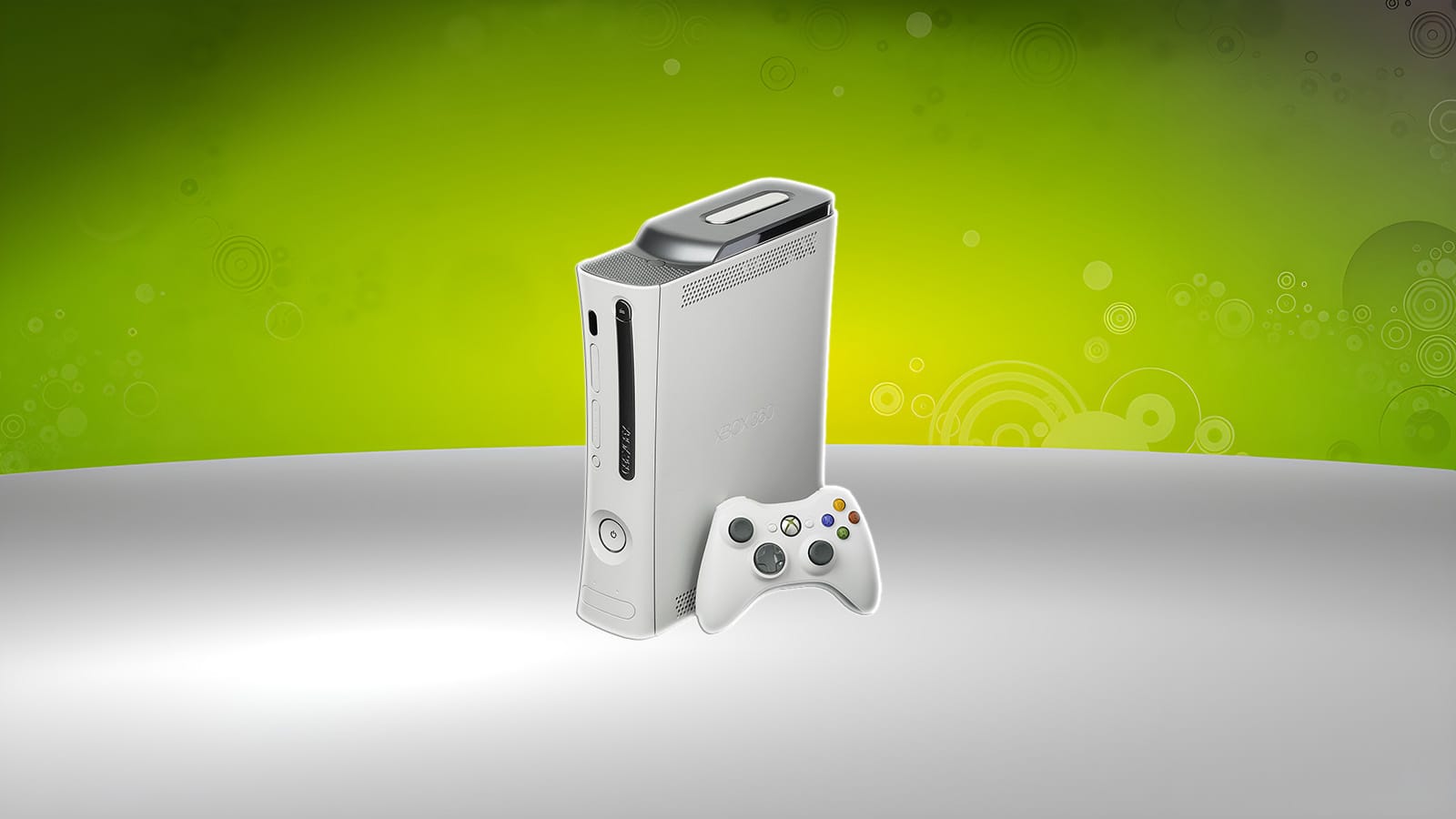
Looking back, the Xbox 360 was never just a box that played games. It was a battleground, a proving ground, and ultimately a blueprint for the future of gaming. It stumbled badly in places — the Red Ring of Death nearly sunk it, the HD-DVD gamble fizzled, and Kinect became more novelty than revolution. But despite its flaws, the 360 carved out a legacy most consoles only dream of.
It was the machine that taught us the power of online communities. The one that normalized digital stores, achievements, and downloadable content. The one that pushed multiplayer from a living-room pastime to a global phenomenon. It even forced Sony and Nintendo to rethink their own strategies, setting a standard for what gamers expected in a connected world.
For millions, it was the console of midnight launches, of party chats that stretched until sunrise, of racing in Forza, tending to gardens in Viva Piñata, or losing themselves in the grand storytelling of Lost Odyssey. It was messy, it was ambitious, it was sometimes broken — but it was never boring.
The Xbox 360 wasn’t perfect. But in its mix of brilliance and blunders, it defined an era. And in doing so, it secured its place as one of the most important consoles ever made.

